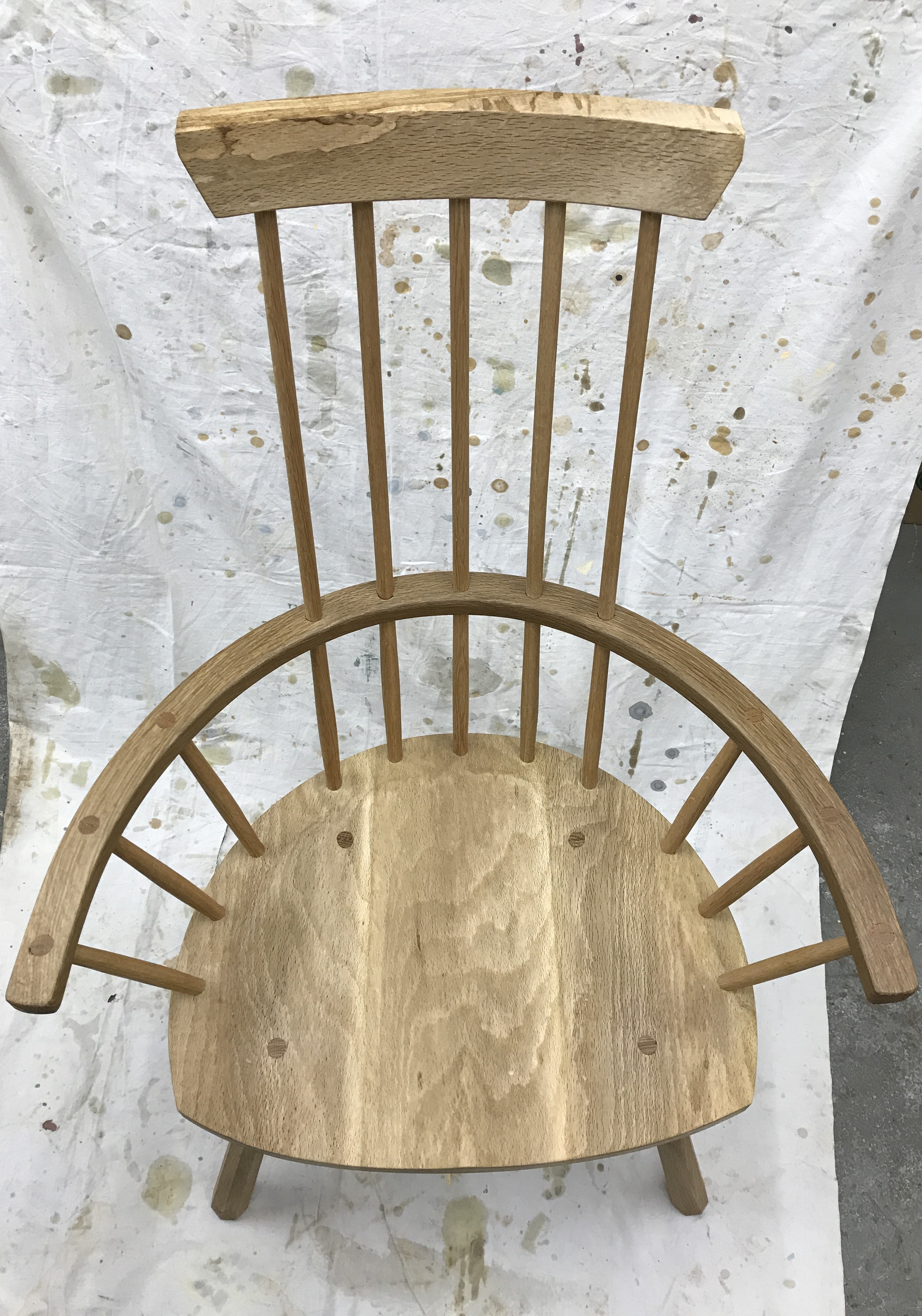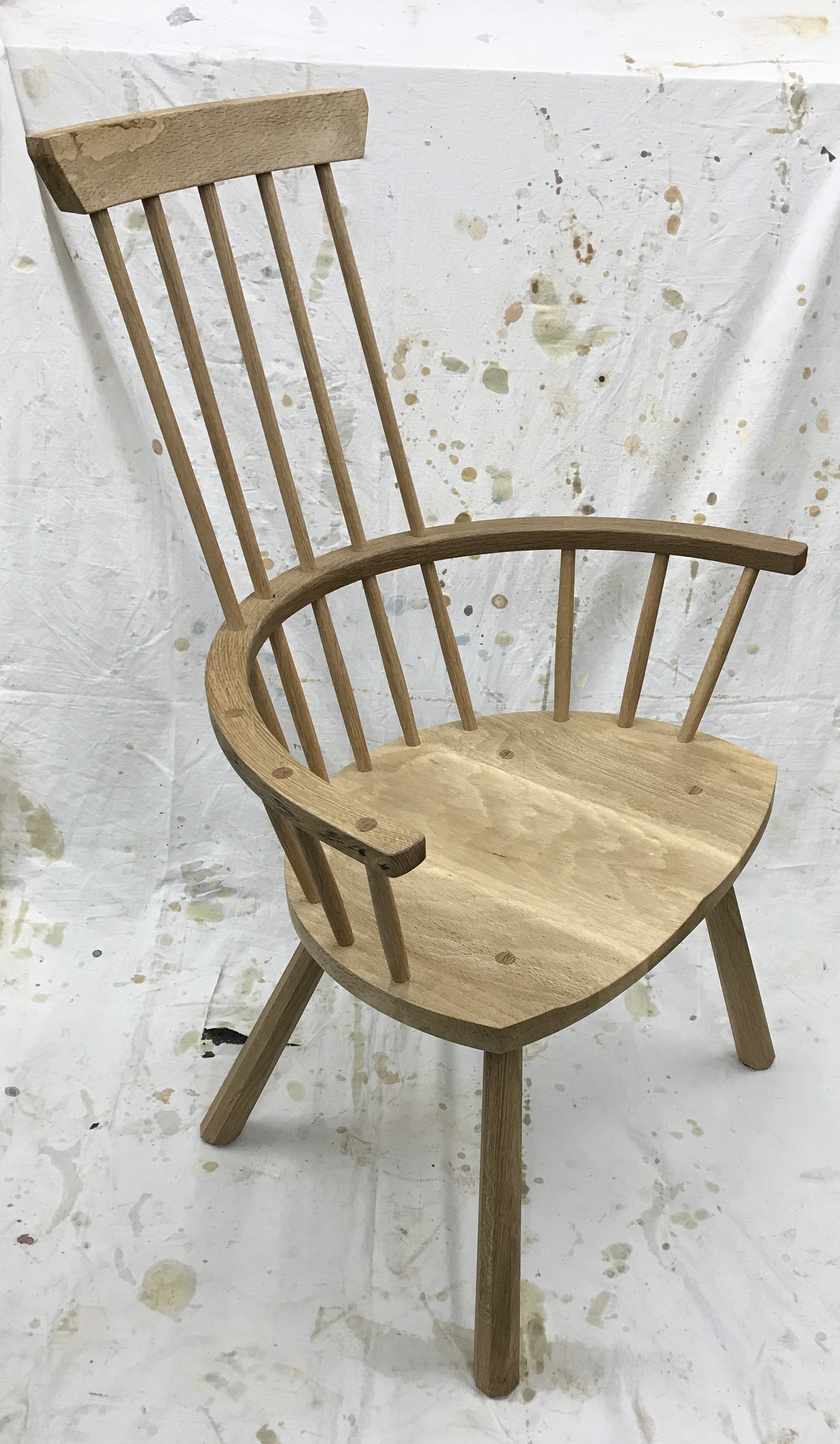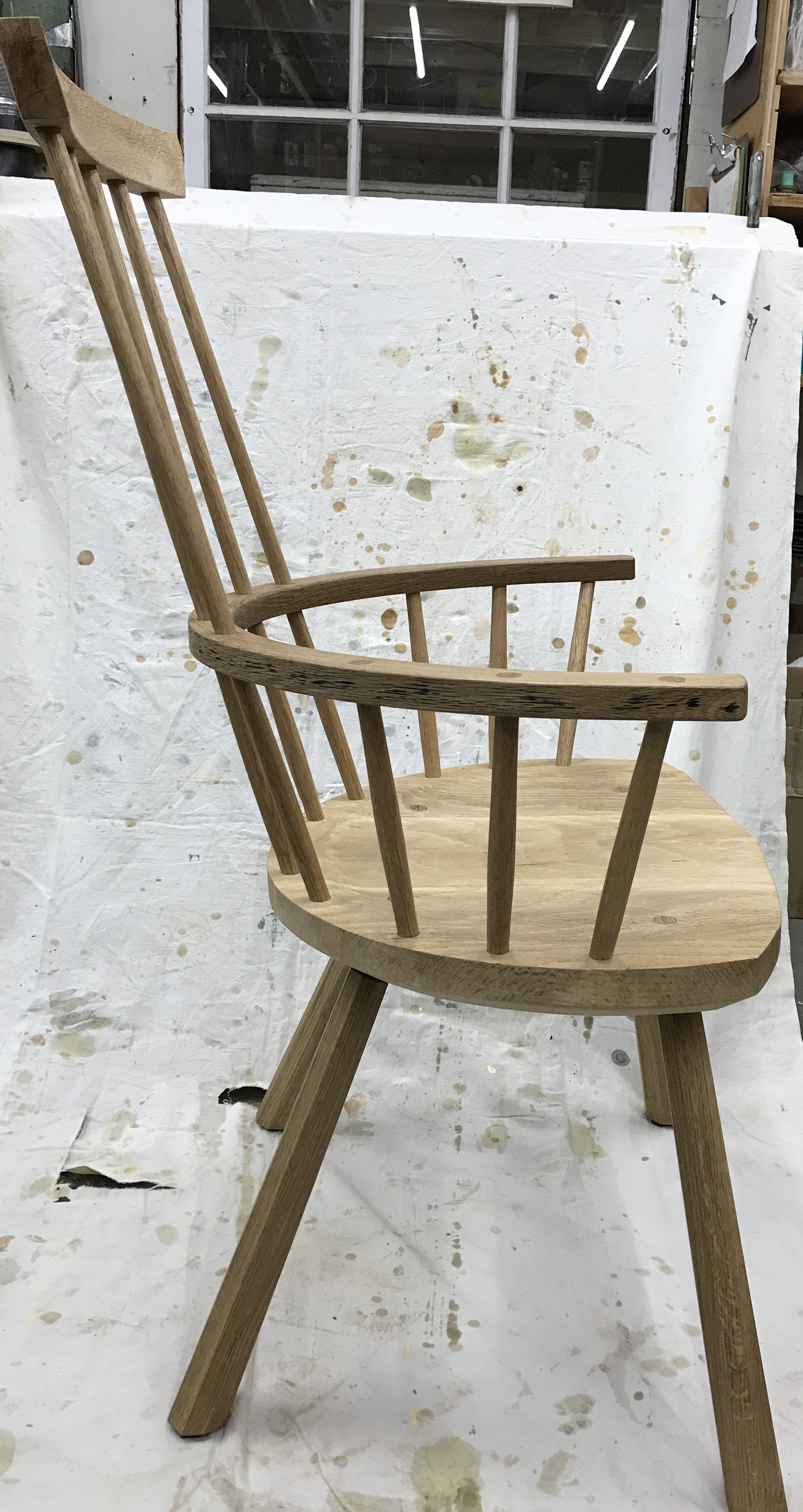I’ve been on a bit of a learning curve lately. So far all of my welsh chairs have had parallel-sided sticks. Effectively shop-made dowels. They’re relatively easy to make and because they can just drop through the arm bow and into the seat they make assembly and glue-up easier. But chairs have more visual interest if the sticks have a subtle bulge between the arm bow and the seat. The fancy word for this is “entasis.”
The first time I tried this new approach (Chair number 8) was a disaster. With the entasis the sticks could no longer be dropped into the armbow, so assembly gets more complicated. Sure enough, the glue-up for that chair got out of control and the arm bow wound up with a weird tilt to it. I also managed to mess up the geometry of the legs and stretchers. To make matters even worse I completely messed-up the finish. That chair hung around the shop for a few weeks, then I cut it up and dumped it in the scrap box. That was a tough learning experience. It took a while but I screwed up my courage and resolved to try again. Learning what I could from the recent mistakes. This time the whole project went smoothly.
Like the Cardigan chair, this chair has a steam-bent arm bow. But this one has a wider arc, creating a more open shape. The seat is also a bit wider than previous chairs and it has a rounded front. Most of the chair is Garry Oak from our local wood rescue program. The sticks are white oak. And in a moment of reckless abandon I gave this chair five long sticks, not four.
I originally thought that I would ebonize this chair, making it jet black. But with the open arms and oval seat this chair seems friendly and welcoming. A black finish did not seem right. So I kept its natural colour, with just a coat of Osmo. I can’t guarantee that I’m finished with black chairs, but this one is a nice change. Spring must be coming
Garry Oak, White Oak, Osmo



